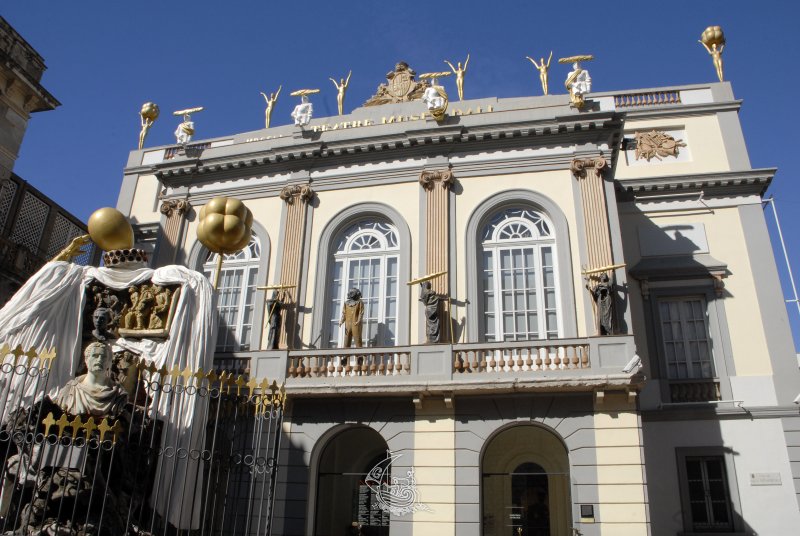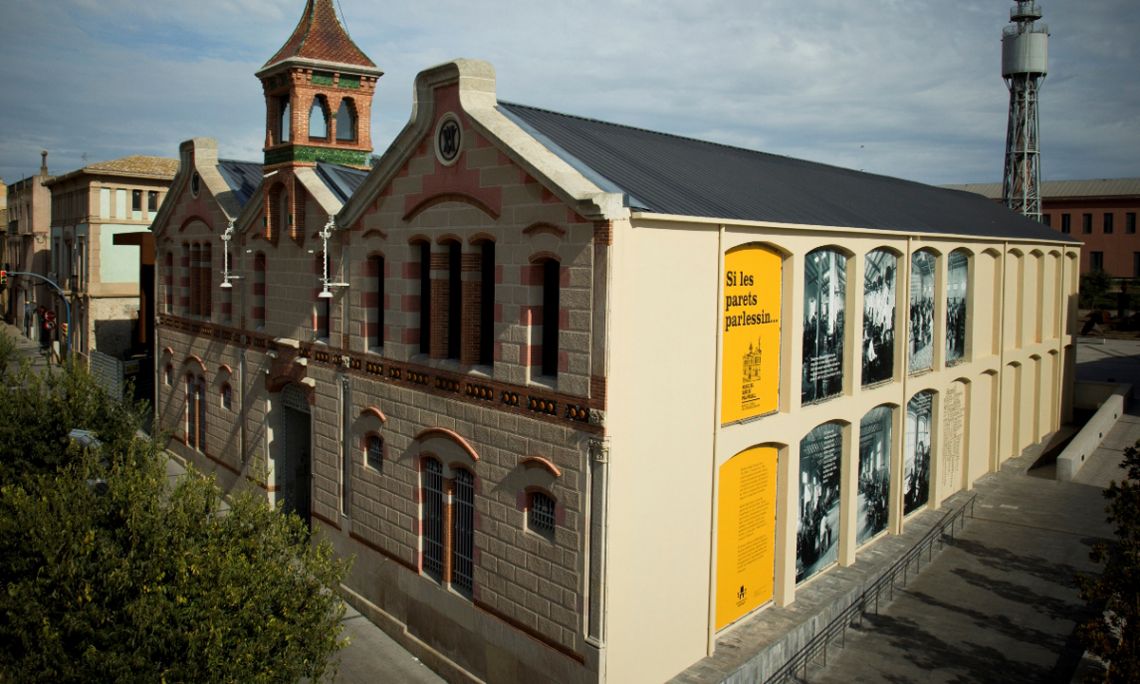

Blog

Cultural journalist
In this post we invite you to explore the connection between two worlds that may seem unrelated: museums and gastronomy. We'll be looking at five museums that are "scrumptious enough to eat", bridging these two worlds so that you can learn about the link between Girona's heritage and gastronomy. Let's go!
The Palamós Fishing Museum seeks to promote the cultural, economic and social development of the community by sparking change and thought around maritime and fishing heritage. Its mission, in fact, involves preserving, researching, disseminating and interpreting this heritage. The museum is a place of dialogue between seafaring people and the rest of society, accentuating the maritime tradition of the town of Palamós. The museum houses a permanent exhibition and stages temporary displays on specific themes, but its neatest feature is a floating extension on two fishing boats: the Gacela and the Estrella Polar. Both are owned by Palamós Town Council and allow visitors to discover and learn about our coast’s main types of fishing: trawling and purse seine fishing. The rockiness of a boat, the smell of an engine room, small, cramped spaces, peering down to the sea floor, watching a school of fish on a sonar screen, listening to a radio conversation, handling a fishing net… All these experiences allow visitors to explore the fishing boats and get an immersive idea of what it’s like to work on them.

One of the offshoots of the Palamós Fishing Museum is the Espai del Peix, or Fish Space. Where there’s fresh fish, there’s bound to be amazing gastronomy. This cultural facility embodies that idea, sharing information about and promoting the fresh fish available at the Palamós fish market. Its missions include more sustainable fishing, greater knowledge about foods that come from the sea and bigger hype around fish-based dishes, educating people about fish products with less commercial interest but high culinary and gastronomic value. A visit to the Espai del Peix will offer you a privileged vantage point over the fish market, a huge window into the daily buying and selling of fish. There are also videos and panels with insightful information about the world of fishing and the process of bringing fish products to market. The space also hosts workshops and tastings featuring traditional recipes, fisherman dishes and more innovative proposals, all using local, affordable, nutritious and health friendly fish from our corner of the sea.

Our second suggestion is to plan a visit to the Dalí Theatre-Museum and then enjoy an exceptional culinary experience at the restaurant in the Duran Hotel, the historic inn located on La Rambla de Figures (Street Lasauca). Otherwise, you can take one of the food and wine tours around the town of Figueres with sommelier Laura Masramon. The Dalí Theatre-Museum, quite possibly the world’s largest surrealist creation, is located in the former Municipal Theatre, a building from the 19th century that was partially destroyed at the end of the Spanish Civil War. The Figueres-born painter acquired it, restored it and turned it into a museum where he could exhibit his artwork. It is now one of the most visited museums in the world.

Just a few streets away from the museum is the Duran Hotel, whose restaurant blends tradition and modernity into its dishes using top-quality, market-fresh products. As a matter of fact, the opening lunch of the Dalí Theatre-Museum took place in this restaurant. In the 1950s, the restaurant became a well-known eatery, and its prestige has steadily grown ever since. It is not only a place of renown for its cuisine, but also because it is inseparable from the history of the city itself. Indeed, it has been the setting for memorable episodes, such as when Dalí dined there and left the elephant calf that Air India had just gifted him in the care of the owners.
You can complement your visit to the museum and the restaurant with one of the three food and wine tours offered by sommelier Laura Masramon. The Galatea Tower tour starts at El Motel, the restaurant housed in the Empordà Hotel. It then stops in front of the Galatea Tower before moving on to Txot’s cider house. The second tour begins at the new offices of the Regulatory Council of the Empordà Designation of Origin, then heads to the Ca la Teta wine cellar at the Duran Hotel and ends at the stairs where the tribute to Isaac Newton stands and the open kitchen of Bocam can be seen. The third tour includes a glass of wine and a bite of food at Can Jeroni (a remarkable family restaurant), a further tasting at the local fruit and vegetable market, and ends at the El Pelegrí restaurant at the Pirineus Hotel.

Over the centuries, L’Escala has cultivated an industry that has earned it worldwide fame: the salting of anchovies. The Anchovy and Salt Museum opened in 2006 in the old abattoir. It chronicles the history of fishing and blue fish salting from the 16th century to the present day, and immerses visitors in a time, a tradition and a body of knowledge that are unique to the Catalan coast. It also offers visitors large-scale temporary exhibitions on ethnological themes, as well as periodically hosting lecture series on history, culture and heritage organised by the Centre d’Estudis Escalencs. The Alfolí de la Sal (an old salt warehouse used when salt was a royal monopoly) reopened in 2017 as a cultural facility linked to the museum, with a mission to raise awareness of L’Escala’s heritage. The building is located near the beach of the old port and currently houses the permanent exhibition entitled L’Escala and the Sea of Empúries, the L’Escala Historical Archive and the Espai Víctor Català-Alfolí de la Sal, a centre devoted to disseminating the work of this universal L’Escala-born figure, a great female writer of Catalan literature.

Together with the Anchovy and Salt Museum, we suggest paying a visit to the town’s emblematic anchovy producers and shops. L’Escala boasts a tradition-steeped history in the anchovy industry, which is documented thanks to the writer and jurist Francisco Zamora (1757-1812), author of Diario de los viajes hechos por Cataluña [Diary of trips around Catalonia], in which he wrote that L’Escala is one of the towns to have best preserved its salting tradition. Its reputation has spread around the world, and over the years it has kept up the traditional way of making salted fish using all-natural products. A visit to one of the anchovy factories in the town is a unique opportunity to find out how anchovies from L’Escala are made today. Callol-Serrats (the oldest in the industry), Anxoves El Xillu, Anxoves l’Escala and Salaons Solés are the main factories.

The Castelló d’Empúries Flour Mill is a flour factory dating back to the early 20th century. Now converted into a museum, it still contains all the machinery used in the industrial process of transforming wheat into flour. The Eco-Museum preserves industrial heritage, namely the machinery used in the flour factory, a testimony to an activity that has been carried out since medieval times. It also preserves natural heritage, in this case the Rec del Molí, a water channel of medieval origin that rises in the Vilanova de la Muga lock. Apart from the permanent exhibition, the facility also serves as a documentation centre.

Visitors are able to go on a guided tour of the Flour Mill and Eco-Museum, which lasts about an hour, allowing them to explore the factory and learn about the varieties of wheat milled there, the systems used to mill them, the phases of the industrial process and the source of energy that makes all the machinery run. There are also dramatised tours, but the one we would suggest is the Enfarina’t activity, which combines the guided tour with a tasting of Rufa wheat beer and bread from La Tramuntana.

Located in the centre of Palafrugell, the Cork Museum is a unique facility due to its subject matter, its territorial scope and its dedication to service. It acquires, conserves, interprets and promotes heritage related to the world of cork in Catalonia, as the shaper of landscape, industry, ways of life and a common identity. It aims to contribute to the social, economic and cultural development of the community; to support formal education and serve as a venue for informal education; and to offer an alternative for creation and leisure. The museum is located in a former cork factory, the foremost in Spanish industry. It also has a notable past within the sector, with elements that are unusual in cork-making constructions, which are often functional buildings that make no concessions to decorative features or involve renowned architects. This aspect makes the complex even more remarkable, given its elements of Catalan Modernisme, its size and its structure.

The Cork Markers’ Tapas tour is put on jointly by the Cork Museum and the restaurant Cuina de l’Issac. It is a perfect blend of culture, heritage and gastronomy. It begins with a guided tour of the Cork Museum to introduce visitors to the “civilisation” of cork makers, the substratum of all the villages around Les Gavarres. Afterwards, at La Sala Gran in Llofriu, visitors enjoy a culinary experience led by chef Isaac Sabrià, with a tasting of selected dishes eaten by the people of the area: the Cork Makers’ Tapas, a food trip down memory lane. The selection of dishes represents the cork markers’ traditional cuisine, both their daily meals (cod, stockfish or catshark stew) and the food items they so often enjoyed at parties and feasts, such as L’Empordà-style rice or the sea and mountain dish made with meatballs, octopus from Palamós and black chanterelle mushrooms.
